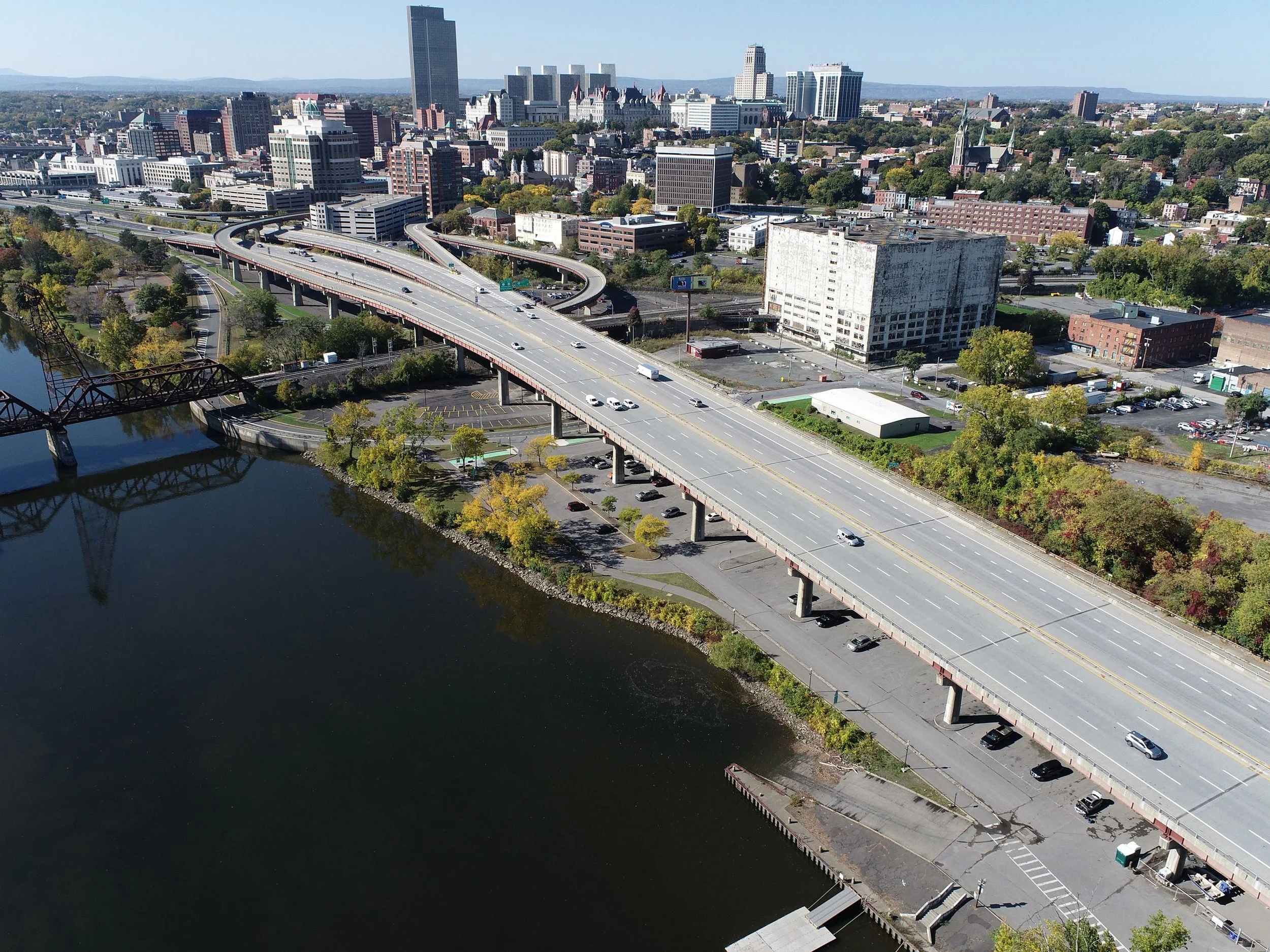Albany Waterfront – Brand & Placemaking Masterplan
A comprehensive design vision to reconnect Albany to the Hudson River – unifying parks, gateways, and downtown corridors under one waterfront story, even before the physical work is complete.
This project lives primarily as a masterplan of branding, wayfinding, and placemaking concepts created to guide future implementation.
Snapshot.
PROJECT TYPE
Branding & Master Plan (Conceptual)
ROLE
First Director of Marketing
SCOPE
Waterfront parks, gateways, downtown links
FOCUS
Reconnecting Albany to the Hudson River
Why the Waterfront Needed a Story
The construction of I-787 and decades of urban renewal physically and psychologically cut Albany residents off from their own river. Communities in the South End and beyond lost their direct relationship to the Hudson – the water was close, but it might as well have been miles away.
The City didn’t just need signage. It needed a vision: a way for future projects, parks, and gateways to feel like parts of a single waterfront experience.
This masterplan asks a simple question:
“If the waterfront were a brand and a place at the same time, how would it look, feel, and move people?”
The Albany Waterfront Identity
I created a flexible waterfront brand that could stretch across parks, trails, gateways, and downtown connections – distinct from, but aligned with, the City’s core identity.
Primary and secondary Albany Waterfront logos, district icons, color palette, typography, and wave motifs designed to echo the Hudson and visually tie destinations together.
Designing How People Move, See, and Feel the Waterfron
Wayfinding as Storytelling
Lamp post banners, floor markings, and kiosks act as narrative devices – using waves, arrows, and phrases like “You’re almost waterside” to guide people emotionally and physically back to the river.
Branding the South End Connector
Underpass “dead space” becomes a branded corridor through section signage, environmental graphics, bike fencing covers, and environmental messaging – turning a simple route into a stitched-together story.
Gateways as First Impressions
Northern and Southern gateway concepts reframe key intersections as thresholds to the waterfront, with rebranded headwalls, water-inspired murals, interpretive signage, and bold calls to explore the river.
Art as Infrastructure.













This work turns infrastructure into narrative, proving that design, policy, and people can move together with purpose.
Branding at the scale of a city – unifying multiple parks, gateways, and neighborhoods under one waterfront identity.
Design used to engage with history, displacement, and access, not just aesthetics.
A demonstration of how <strong>systems-level design can reconnect residents to a place they can’t yet fully see.
A visual and narrative toolkit future teams can lift directly into implementation when funding and timing align.










